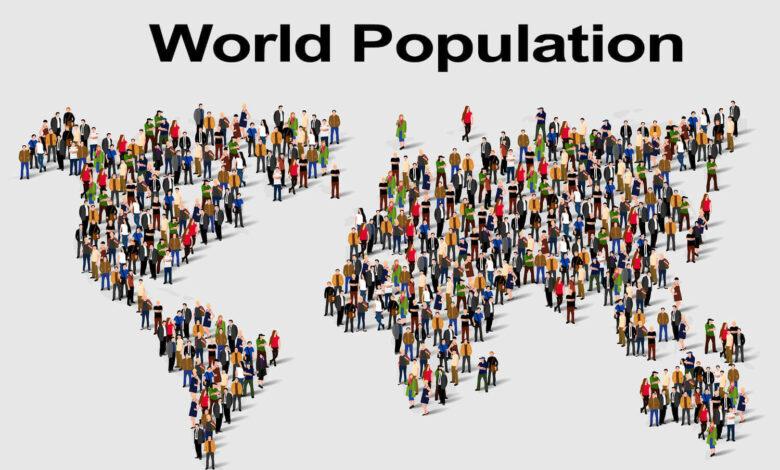
15 Most Populated Countries in the World 2023
The world’s population continues to grow at a rapid pace. As of 2023, the global population has surpassed 7.9 billion people. With this massive population growth comes shifting demographics and changes in the most populated nations.
Some countries have experienced explosive population booms, catapulting them up the list of most populous countries. Others have seen more modest growth, leading to a decline in their global population ranking. Tracking these population trends provides critical insight into the economic, political, and cultural forces shaping our world.
👉 Relocate to Canada Today!
Live, Study and Work in Canada. No Payment is Required! Hurry Now click here to Apply >> Immigrate to CanadaThis article will explore the 15 countries with the largest populations in 2023. We will look at their estimated populations, growth trends, and other key demographic details. Understanding these highly populated nations offers a snapshot into the present and future of our crowded planet.
Read Also: Top 15 Smallest Countries in Africa
15 Most Populated Countries in the World 2023:
1. India – 1,428,627,663
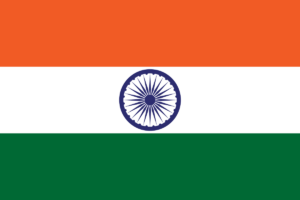
With over 1.4 billion people, India ranks number one among the world’s most populous countries in 2023. India has held this spot since 1998 when it overtook China as the country with the largest population.
Home to over 17% of the global population, India’s massive population is growing at a rate of over 1% per year. Much of this population boom can be attributed to rising life expectancy and high fertility rates, especially in rural areas.105 good morning messages
India’s population is relatively young, with a median age of 28 years old. Over 50% of Indians are below the age of 25. This swelling youth population presents enormous challenges as well as opportunities for economic growth.15 Most Populated Countries in the World 2023
Most Indians live in rural villages, but cities are rapidly expanding. Mumbai, Delhi, Bangalore, Hyderabad, and Kolkata are among the most populous urban centers. With so many people, India faces environmental and resource challenges. Poverty remains widespread despite economic progress.
Read Also: Top 15 Most Populated Country in Europe
2. China – 1,425,671,352

After many years at number one, China ranks second among populated countries with over 1.42 billion residents. Thanks to restrictive population control policies, China’s growth has slowed considerably from its peak in the 1980s.
👉 Relocate to Canada Today!
Live, Study and Work in Canada. No Payment is Required! Hurry Now click here to Apply >> Immigrate to CanadaChina’s population is aging more rapidly than India’s due to longer life expectancies and declining fertility. The over 60 population is expanding, while younger Chinese generations are shrinking. This demographic transition will pose economic challenges.
Eastern provinces like Guangdong and coastal manufacturing hubs continue driving China’s explosive urbanization. Mega-cities like Shanghai, Beijing, Shenzhen, and Tianjin each have tens of millions of inhabitants. But rural communities still comprise nearly half of China’s people.
While population control prevented overcrowding, China now seeks balanced demographics and sustainable growth. Migration from countryside to cities will persist. China’s large population ensures its influence will remain formidable.
3. United States – 339,996,563

With around 340 million residents, the United States holds steady as the third most populous country. Once one of the fastest growing developed nations, U.S. population gains have mellowed due to lower fertility rates and immigration.
A near record low fertility rate of 1.64 births per woman contributes to slower U.S. population growth compared to Asian and African nations. Net international migration also dipped in recent years. The U.S. growth rate is now around 0.5% annually.
California remains America’s most populated state at around 40 million. Texas and Florida follow with 30 and 22 million respectively. Urban centers like New York City, Los Angeles, and Chicago boast tens of millions of metro inhabitants each.
America’s population is aging, with over 55 million citizens aged 65 or older. Racial diversity continues expanding, with steady Hispanic, Asian, and multiracial growth. Though not growing as robustly, the U.S. will remain the world’s third most populous country for decades.
4. Indonesia – 277,534,122

The largest country in Southeast Asia, Indonesia has over 277 million people, ranking fourth among world populations. Indonesia consists of over 17,000 islands, with Java the most populated.
Indonesia has a fairly steady population growth rate at around 1% annually. This equates to over 3 million new residents per year. Indonesia faces population dispersion challenges with so many islands and rural areas.
The capital Jakarta boasts over 10 million inhabitants, making it among the world’s megacities. Other urban centers like Bandung, Surabaya, and Medan have millions of residents. But nearly half of Indonesians live in smaller rural settings across the archipelago.
With a median age of 30 years old, Indonesia has a young population. Ensuring adequate jobs and quality education for this growing workforce presents difficulties. But harnessing the human capital could also bring economic gains.
5. Pakistan – 240,485,658
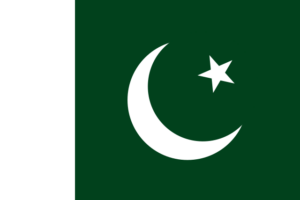
Pakistan rounds out the top five most populated countries with over 240 million citizens. Pakistan’s growth rate of around 2% annually highlights its population boom. Each year over 4 million Pakistanis are added.
Pakistan’s population exploded in the late 20th century due to improving life expectancy and high fertility rates. Large family sizes are still common, especially in rural regions. Pakistan’s median age is just 23 years old.200 romantic love message for her
Yet Pakistan is rapidly urbanizing as people flock to cities seeking opportunities. Karachi, Lahore, and Faisalabad each have over 10 million residents. Still, Pakistan’s infrastructure, education, and healthcare systems are under strain from the unrelenting growth.
Water and food security issues also loom as Pakistan’s population continues expanding. With strategic location and a young workforce, Pakistan’s destiny hinges on the government’s ability to provide for this massive populace.
6. Nigeria – 223,804,632

Nigeria takes sixth place with a population exceeding 223 million. Africa’s most populous nation is growing by around 2.5% each year, ensuring it remains a demographic powerhouse.
Nigeria’s population likely eclipse 250 million by 2030. With high fertility rates and improving life expectancy, Nigeria’s growth appears unstoppable. The median age remains a mere 18 years old.
Rapid urbanization compounds Nigeria’s population pressures. Mega-cities like Lagos are swelling with migrants seeking opportunities. Housing, sanitation, and services can’t keep pace despite city growth. Air pollution is another urban challenge.
Nigeria’s economic potential is constrained by this breakneck population expansion. The government faces severe challenges in providing adequate education, healthcare, jobs, infrastructure, and security for all Nigerians.
Read Also: 15 Smallest Countries in the World
7. Brazil – 216,422,446

Brazil weighs in as the seventh most populated country with around 216 million citizens. Located in South America, Brazil is the world’s fifth largest country geographically.
For many years, Brazil’s population grew rapidly. Fertility rates have since declined, leading to more modest annual growth under 1%. However, Brazil still adds over 2 million people per year.
Brazil is an urban nation, with nearly 90% living in cities and towns. Coastal megacities like Sao Paulo and Rio de Janeiro are populous metro areas. Inland Brasilia, Curitiba, Belo Horizonte and others comprise millions of urban dwellers.
Brazil faces economic and environmental challenges from continued population growth. Deforestation of the Amazon has accelerated to support development. Poverty and inequality also persist, especially impacting rural populations.
8. Bangladesh – 172,954,319
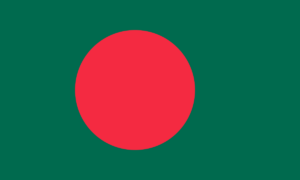
One of the most densely populated countries, Bangladesh crams over 172 million people into a nation the size of Iowa. The country only ranks 92nd in size but 8th in population.
Bangladesh averages over 1,000 people per square kilometer. Most Bangladeshis live in low-lying areas near the Ganges Delta vulnerable to flooding from monsoons and sea level rise.
High population density contributes to endemic poverty in Bangladesh. However, economic conditions have improved with industrialization and urban growth. Dhaka has about 20 million inhabitants.JAMB Result
Bangladesh’s growth remains around 1% annually. Large families are still commonplace in rural areas. Bangladesh confronts extreme population strains on housing, sanitation, jobs, and infrastructure. Greater access to contraceptives could ease these pressures.
9. Russia – 144,444,359

Russia is the largest country by land mass, covering over 6.5 million square miles. With around 144 million inhabitants, Russia ranks ninth in population size. However, Russia’s population is declining.
High emigration, low immigration, falling birth rates, and shorter life expectancies have all reduced Russia’s populace. Russia is aging, with a median age over 40 years old. The population drops by about 400,000 people per year.
Most Russians live in the western part of the country. Moscow dominates with over 12 million residents. Other cities like Saint Petersburg, Novosibirsk and Yekaterinburg have between one to five million inhabitants.
Vladimir Putin has implemented measures to boost Russian birth rates and life expectancy. Despite this, Russia will continue losing people barring major migration influxes or welfare improvements. This shrinking population threatens Russia’s economic and geopolitical might.
Read Also: Top 15 Most Populated States in Nigeria
10. Mexico – 128,455,567

With over 128 million residents, Mexico claims the tenth spot among the world’s most populous countries. Mexico’s annual population growth has stabilized around 1% in recent decades.
Mexico’s population explosion came last century due to lower infant mortality and higher fertility rates. Larger families were encouraged to drive economic growth. Today Mexico’s birth rates have declined, slowing population gains.
Mexico is aging, with a current median age of around 30 years old. Immigration to the United States and urban migration have also curbed once surging growth. Mexico City itself has over 20 million inhabitants.
Nonetheless, Mexico still has a vibrant, young populace to harness its economic potential. As living standards rise, population pressures should ease. Better access to family planning resources also assists Mexico.
11. Ethiopia – 126,527,060
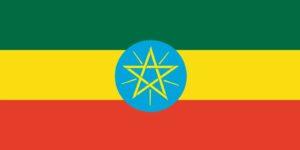
Ethiopia’s population of 126 million makes it the second most populous landlocked country, after Nepal. With over 110 million people, Ethiopia surpassed Egypt in the 2000s to become East Africa’s most populated nation.
Rapid population growth continues, with Ethiopia averaging around 2.5% annual gains. Most Ethiopians live in rural areas, though urban migration has accelerated. Addis Ababa approaches 5 million inhabitants.
Early marriage and high fertility contribute to Ethiopia’s population boom. The government has sought to expand contraceptive access and education to curb unsustainable growth. Drought and food shortages remain chronic concerns.
With a median age under 20 years old, Ethiopia’s young population provides economic opportunities. However, converting this potential into poverty reduction and sustainable development remains a steep challenge given limited resources.
12. Japan – 123,294,513
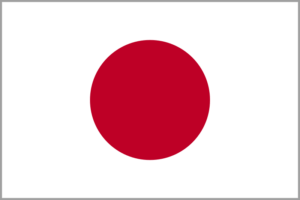
The lone developed nation among the 15 most populated countries, Japan comes in at number twelve with over 123 million people. Unlike other populous nations, Japan’s population is shrinking.
For years Japan experienced tremendous growth, hitting a peak of 128 million. But fertility declines and restrictive immigration policies have reduced the population. Japan’s median age of 48 years old reflects an aging society.
Urbanization is pervasive, with 90% of Japanese citizens residing in dense cities. Greater Tokyo has a staggering population of 35 million people. Osaka, Nagoya, Sapporo, and Kobe are other major metro areas housing millions.
Japan’s economy has suffered from the shrinking workforce. Leaders consider measures to raise fertility rates, attract immigrants, and boost female labor participation. Reversing demographic declines is critical to Japan’s standing.
13. Philippines – 117,337,368

The island nation of the Philippines has a population exceeding 117 million, which continues growing by around 1.5% annually. As a Southeast Asian archipelago, the Philippines faces similar issues as Indonesia regarding population dispersion across islands and rural areas.
Manila dominates as one of Asia’s largest cities, with metro population over 20 million. Cebu City, Davao City, and Zamboanga are also major Filipino urban centers. But over half of Filipinos live in provincial towns and villages.
The Philippines has a median age under 25 years old, giving it a youthful populace compared with aging Asian nations like China and Japan. Providing education and opportunity for younger generations presents a major government challenge.
Overseas migration is commonplace, with many Filipinos working abroad to send money home. This foreign remittance influx buoys the Philippine economy. But brain drain impacts domestic development.
Read Also: Top 15 illegal Islands that you Cannot Visit
14. Egypt – 112,716,598

Egypt’s population surpasses 112 million, making it the most populated country in the Arab world and North Africa. All Egyptians live along the Nile River valley and delta which accounts for under 4% of Egypt’s land but provides the only arable farmland.
Egypt averaged around 2% annual population growth in the 20th century. Growth has now slowed to closer to 1.5% per year. Egypt still adds over 2 million people annually.
Egypt remains a largely rural nation, with around 40% of citizens living in villages and smaller towns dependent on agriculture. However, cities like Cairo and Alexandria each boast metro populations over 15 million.
Water scarcity, food imports, unemployment, and crowded urban zones pose major Egyptian challenges. Family planning campaigns seek to balance growth with resources. But addressing entrenched poverty will be difficult with continuous population increases.
15. DR Congo – 102,262,808

The Democratic Republic of Congo (DR Congo) rounds out the 15 most populous nations, with around 102 million citizens. Though it covers a vast land area, the DR Congo is one of Africa’s more densely settled countries.Best Whole Milk in Nigeria
A fertility rate of nearly 6 births per woman ensures the population continues expanding rapidly. However, life expectancy remains low at just 60 years. Outbreaks of disease like Ebola suppress population growth somewhat.
Civil conflicts have also claimed lives, though the DR Congo has now achieved some stability. Kinshasa has about 13 million residents, making it a mega-city despite limited infrastructure. Underdevelopment is widespread throughout the country.
The young and growing populace represents untapped potential. But chronic corruption and lack of services impede quality of life improvements for most Congolese. Unlocking Congo’s economic prospects remains a distant proposition.
Conclusion:
Reviewing the world’s top 15 most populated countries provides insight into global demographic shifts. Asia and Africa are home to rapidly growing nations, while developed regions like Europe exhibit much slower expansion.
Tracking these population centers reveals the promise and pressures of our crowded planet. Can developing nations convert growth into sustainable improvements for impoverished populations? How will aging societies care for swelling elderly cohorts with shrinking workforces?
Balancing resources and populace remains a challenge. Some countries seek to limit growth, while others want to replenish declining populations. But wherever growth occurs, governments must provide equitably for their citizens.JAMB portal
People drive progress when empowered with healthcare, education, and opportunity. The future will be defined by how well these highly populated nations can leverage their human capital. With good governance, the mammoth populations can be an asset instead of a burden.
Check JAMB Result
Check and Confirm: How much is Dollar to Naira







